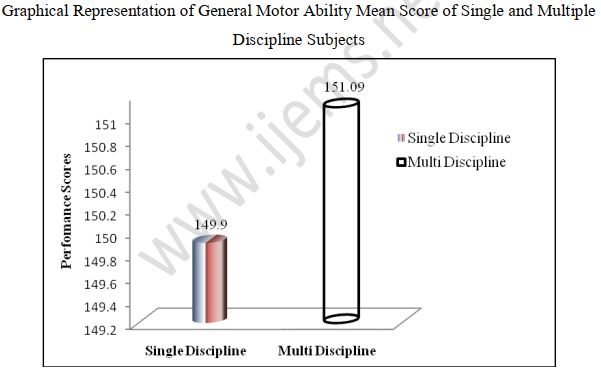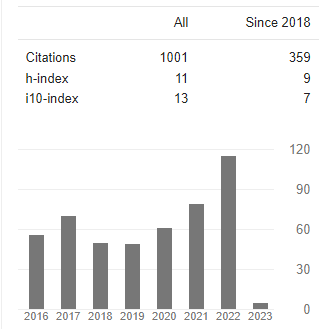A DIFFERENTIATION STUDY ON UNIVERSITY PLAYERS IN RELATION TO GENERAL MOTOR ABILITY
Abstract
Purpose of the study was to find out differentiation on university players in relation to general motor ability. For the purpose of this study one hundred male university players from different sports were selected purposely. Fifty subjects were those, who had represented university in only one sport and fifty students were those, who had represented university in two or more than two sports. Independent t-test was employed at 0.05 level of significance.The study shows that multiple discipline players have better General Motor Ability compare to single discipline players. Multi-discipline players were better than the single discipline players in all the variables of General Motor Ability, i e power, strength and agility when each variable was considered remoteness.
Downloads
References
Barry L. Johnson and Jack K. Nelson, Practical Measurement in Evaluation in Physical Education, (Delhi : Surjeet Publications, 1982).
Charles A. Bucher, “Foundation of Physical Education”, 6th ed.
Garrett, E. H. (2008). Statistics in psychology and education. Delhi: Surjeet Publications. H. Harrison Clarke, Application of measurement to Health and Physical Education, 5th ed., Englewood Cliffs, (1976).
John D. Brock, Walter A. Cox and Erestus W. Pennock, “Motor Fitness”, Research Quarterly Vol. 12, No.2, May 1941.
S. S. Mathur, “Educational Psychology”, 8th ed. (Agra: Vinod Pustak Mandir, 1979).
Verma, J. P. (2000). Sports statistics. Gwalior: Venus Publications.
Vivian, H. et al. (2004). Applied Body Composition Assessment. USA: Human Kinetics, 72, 2nd Edition.
Warner, W. K. & Hoeger. (1989). Life Time Physical Fitness and Wellness: A Personalized Programme. Englewood: Morton publishing company, 2nd Edition.
William, M. H. (1990). Lifetime Fitness and Wellness. USA: Wcb Publishers.















